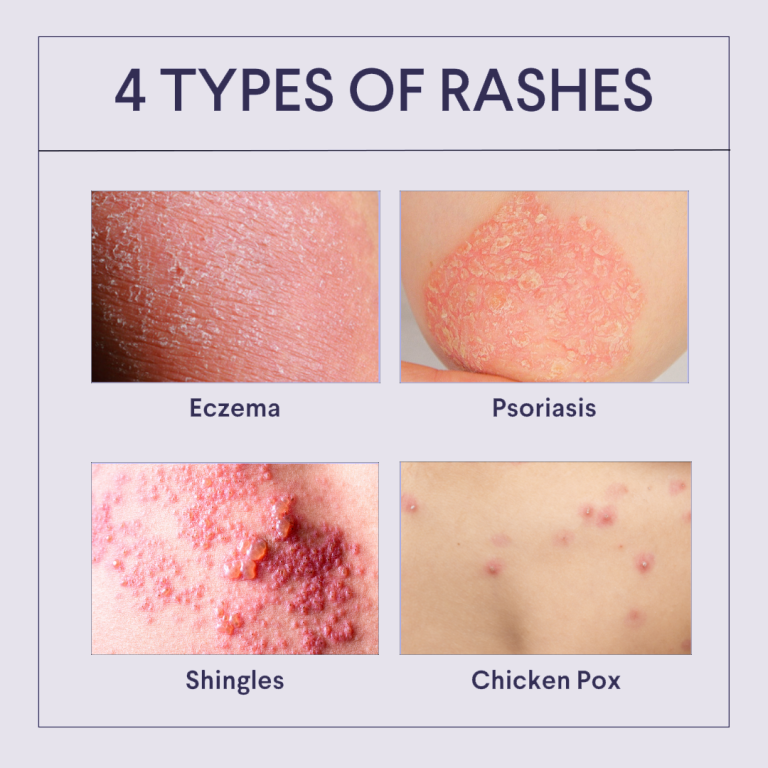How it works:
Share your skin goals and snap selfies
Your dermatology provider prescribes your formula
Apply nightly for happy, healthy skin
How it works:
How it works:
Share your skin goals and snap selfies
Your dermatology provider prescribes your formula
Apply nightly for happy, healthy skin
How it works:
How to help stop a rash from spreading, according to skin experts
Spoiler alert—no matter how much it itches, don’t scratch!



Here at Curology, we currently focus on the diagnosis and treatment of acne, rosacea, and anti-aging concerns. We do not treat many of the conditions mentioned in this article. This article is for information purposes.
Itchy, red, inflamed—rashes are a frustrating skin condition to deal with. They’re also one of the more common symptoms of a number of pervasive skin conditions, including eczema. These conditions can be common, too. For instance, one in 10 people experience eczema during their lifetime—and that’s a lot!¹
It’s one thing to have a rashon your arm or leg—it’s another to have it spread to your neck and face. Either way, understanding how to care for rashes and control their spread can help reduce discomfort while your skin heals. Of course, there are so many different causes behind rashes we can’t cover them all here, but we’ll share an overview of some of the common causes, their contributing factors, and how to help stop a rash from spreading.
First things first: What’s a rash?
Rashes are changes to the color, sensation, or texture of the skin. They often cause redness, itchiness, swelling, and irritation in the affected area. However, rashes come in all shapes and sizes, many different things can cause them (more on that in a bit).
Usually, a simple visual examination is all that’s necessary for a medical provider to determine the type of rash, but sometimes skin testing is necessary to diagnose it. In rare cases, medical providers may not be able to pinpoint the cause at all.²

Wondering when to worry about a rash in adults? Remember, the first step is to see a medical provider for new or concerning rashes. It’s always important to seek professional care when you’re faced with unfamiliar skin irregularities.
What do rashes look like?
The appearance of a rash will depend on its cause. Here are some common rashes and their symptoms—but remember, this is far from an exhaustive list:
Eczema: This inflammatory skin condition can cause itchiness, dry skin, and flaking. Eczema rashes usually appear red, flakey, and/or textured.³
Psoriasis: This skin condition can cause an itchy rash that often occurs on the knees, elbows, scalp, and lower back. This type of rash often occurs with raised patches of thick skin (aka plaques). Some plaques may appear to have a slivery-white coating called a “scale.”⁴
Shingles: This viral infection can cause a painful rash anywhere on the body, but shingles rashes usually appear as a single red, bumpy stripe around the left or right side of the torso.�⁵
Chickenpox: This highly contagious disease is caused by the varicella-zoster virus. A rash caused by chickenpox may be red, itchy, and blister-like, first appearing on the chest, face, and back before spreading.⁶

How do I care for an itchy rash?
When it comes to caring for a rash that itches, step one is fighting the urge to scratch. Scratching may seem to provide relief, but it’s only temporary. It can even make matters worse by further irritating your skin.
Because rashes can be very different, there’s no one-size-fits-all recipe for caring for them. Signs your rash is healing can include reduced symptoms (i.e., the rash becomes less visible or disappears) and discomfort. In other words, if your skin feels better, treatment may be working! If you have a new rash or a rash whose symptoms seem to be intensifying, the first thing you should do is speak with your medical provider to determine the cause. Some rashes require prescription treatment and can’t be remedied at home. There are a number of treatments that may help you control your rash and reduce pesky, uncomfortable symptoms—some may be prescribed by dermatology providers and other skin rash treatments you can do yourself at home. Remember, the right treatment will depend on what’s causing the rash, so we recommend speaking with your dermatology provider about any skin irregularities without an obvious cause (like being exposed to poison ivy or having a sunburn). While we can offer examples of a few prescriptions and home remedies that may help, always follow the advice of a medical professional.
Taking an oatmeal bath. To make an oatmeal bath, combine warm water and a fine powder called colloidal oatmeal (it's available over the counter). While it won’t stop the spread of your rash, it may help temporarily ease some of the itchiness and irritation.
Letting the rash breathe. Avoid covering your rash with clothes or a bandage. Unless it has open wounds, leave the skin exposed to the air.
Applying hydrocortisone cream. This steroid cream can be purchased over the counter and may be effective in treating your rash. But it’s important to pay attention to the directions on the label—topical steroids can have negative side effects when used improperly.⁷
Oral medications: If you’re wondering how to get rid of an allergic reaction rash, specifically, your medical provider may recommend oral steroids, such as prednisolone. These temporarily suppress the immune system, helping relieve swelling, redness, and itching.⁸
Building a skincare routine for sensitive skin
Delicate skin is often more susceptible to rashes, so if you have sensitive skin, it’s important to tailor your skincare routine with this in mind. If you’re experiencing a rash on your face, it’s usually okay to continue using gentle products and ingredients as long as you have no open wounds—but again, always follow the advice of your medical provider.
Here’s how to continue your skincare routine if you’re experiencing a facial rash:
Begin with a gentle cleanser: Keep your skin clear and free of irritants with a cleanser formulated for sensitive skin.
Use a hydrating moisturizer: Rashes can cause dry, itchy skin. A powerful moisturizer may help reduce discomfort and repair the skin.
Finish with sunscreen: Protect your skin from sunburns and UV damage by applying a broad-spectrum sunscreen with at least SPF 30 about 15 minutes before heading outdoors.
Rashes can be uncomfortable and might feel embarrassing, but remember, they aren’t permanent. With proper treatment, they’ll eventually clear up. Talk to a licensed healthcare provider if you spot a new or worsening rash, especially if you can’t figure out what’s causing it. Rashes also warrant medical attention if they come with a fever or trouble breathing. If you think you may be experiencing a severe or new allergic reaction, seek medical attention immediately.
Where Curology comes in
Founded by a team of dermatologists in 2014, Curology’s mission is to offer accessible dermatology service to all for skin concerns like acne, rosacea, and signs of aging. Curology helps take the guesswork out of your skincare routine—licensed dermatology providers work with you to examine your skin, assess your skincare goals, and provide custom treatment options. Currently, we don’t treat most rashes, but our team of licensed dermatology providers is here to answer any questions you may have.
Get your personalized skincare routine with Curology
Get your personalized skincare routine with Curology


If you have sensitive skin, our dermatology providers can help develop a personalized skincare routine tailored to meet your specific skincare goals. Signing up is easy. Just answer a few questions and snap a few selfies to help us get to know your skin. If Curology is right for you, we’ll pair you with one of our licensed dermatology providers, who will create a personalized prescription formula. They’ll also recommend any of our gentle and effective skincare products, like the Curology acne body wash or sunscreen for acne-prone skin. The best part? Your first month is on us! Just pay $5.45 (plus tax) to cover shipping and handling.*
FAQs
This is far from an exhaustive list:
Psoriasis
Shingles
Chickenpox
When it comes to caring for a rash that itches, step one is fighting the urge to scratch. Scratching may seem to provide relief, but it’s only temporary. While we can offer examples of a few prescriptions and home remedies that may help, always follow the advice of a medical professional.
Taking an oatmeal bath
Letting the rash breathe
Applying hydrocortisone cream
Oral medications
Begin with a gentle cleanser
Use a hydrating moisturizer
Finish with sunscreen
P.S. We did the homework so you don’t have to:
American Academy of Dermatology Association. SKIN CONDITIONS BY THE NUMBERS. American Academy of Dermatology. (n.d.).
Penn Medicine. Rash. The Trustees of the University of Pennsylvania. (n.d.).
National Eczema Association. What is Eczema?National Eczema Association. (n.d.).
American Academy of Dermatology Association. PSORIASIS: SIGNS AND SYMPTOMS. American Academy of Dermatology Association. (n.d.).
Centers for Disease Control and Prevention. Shingles (Herpes Zoster). U.S. Department of Health & Human Services. (2019, July 1).
Centers for Disease Control and Prevention. Chickenpox (Varicella). U.S. Department of Health & Human Services. (2021, April 28).
National Health Services. Hydrocortisone for skin. Crown. (2020, December 10).
Puckett Y, Gabbar A, Bokhari AA. Prednisone.StatPearls Publishing. (January 2022).
* Subject to consultation. Subscription is required. Trial is 30 days. Results may vary.

Curology Team

Nicole Hangsterfer, PA-C
Related Articles
The 5 best chemical exfoliators for glowing skinThe ultimate guide to face exfoliators: Our 5 picks for glowing skinWhich tretinoin is right for you, according to Vogue? How to treat atrophic scars: Here’s what you need to knowA simple guide to skincare for menPopular Articles
Ask Curology: Is my cold breaking me out?Slugging: The dermatologist-approved skincare hack going viral on TikTokTretinoin vs retinol: What’s the difference?How to create a self-care routine that actually sticksYour 2023 skincare horoscopeTry prescription skincare
Get routine essentials


Good skin days ahead
Good skin days ahead
- Breakouts
- Redness
- Fine lines
- Dark spots
- Hair thinning
$29.95/month